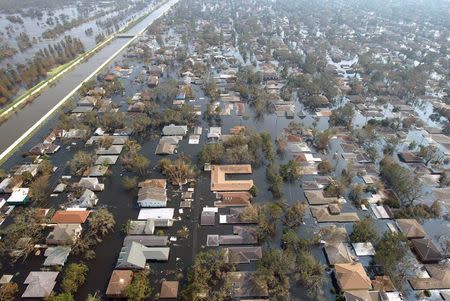New Orleans' finances still vulnerable 10 years after Katrina: Moody's

(Reuters) - A decade after New Orleans was hit by Hurricane Katrina, the costliest storm in U.S. history, the city's finances have improved but still face several challenges, according to a Moody's Investors Service report released on Monday.
Pension, retiree healthcare and debt service costs combined increased nearly 54 percent from 2009 to 2014, from $129 million to $198 million in 2014, Moody's noted, while fixed costs exceeded 30 percent of the city's operating revenues, even as its contribution to its public pensions fell $17.7 million short in fiscal 2014.
New Orleans is also dependent on the oil and gas sector, which is volatile, and its population remains about roughly 18 percent below pre-hurricane levels. In addition, after using its reserves to fill budget gaps during the recession, its liquidity is weak, Moody's said.
Katrina and its aftermath killed nearly 2,000 people and spread devastation and chaos after making landfall on Aug. 29, 2005 in Louisiana.
It also caused economic havoc. Damage estimates vary, but most put the economic impact at well over $100 billion.
Despite the challenges in recovering, the city has built back a significant portion of what it lost as returning people and businesses helped rebuild neighborhoods.
"The recovery of the local economy is a key stabilizing factor that has driven the city's recent positive momentum, by bringing people back, rebuilding communities and revitalizing the tourism industry, which is a key source of revenue for the city," Moody's analyst Andy Hobbs said in a statement.
Moody's rates New Orleans' general obligation debt A3, an upper-medium investment grade, with a stable outlook.
(Reporting by Hilary Russ in New York; Editing by Alan Crosby)

 Yahoo Finance
Yahoo Finance 